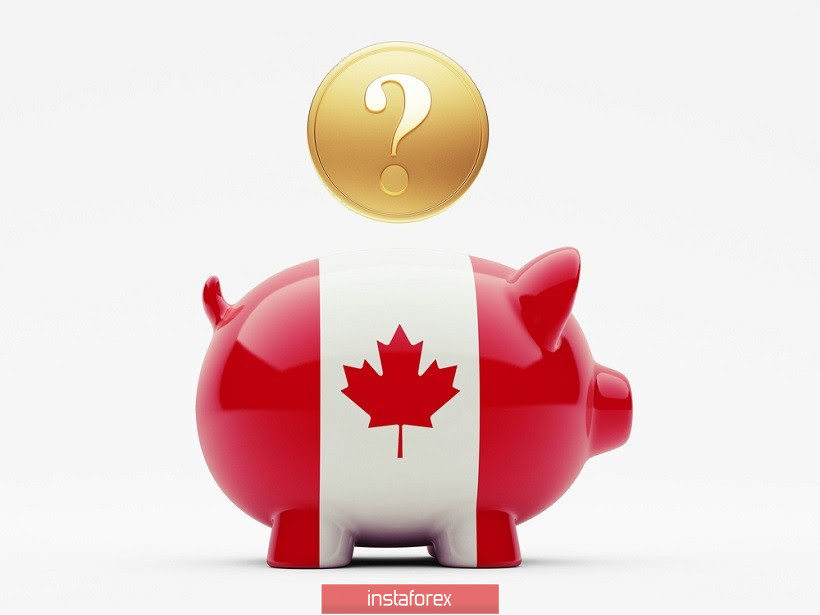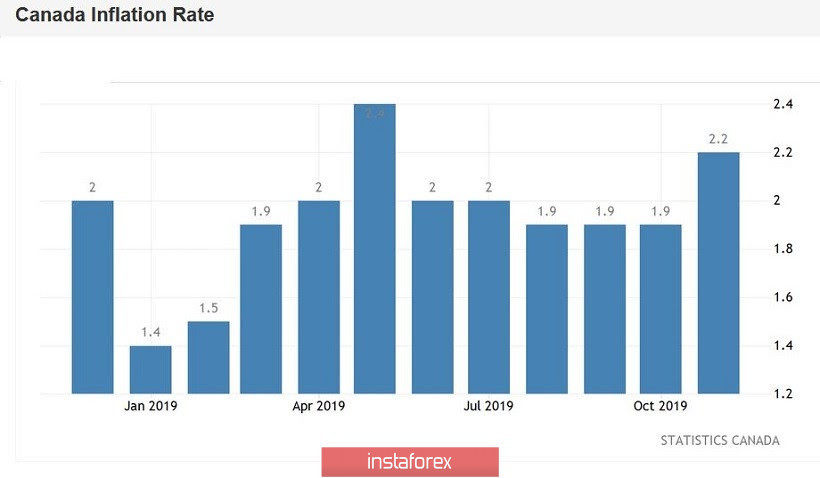At the beginning of this year, the US-Iranian conflict made it possible for the Canadian dollar to become stronger along with the greenback until the middle of the 29th figure. The pair has not been at such price lows since October 2018. The Canadian followed the dynamics of the oil market, which in turn became more expensive due to the panic sentiment of oil traders. At the moment, the situation has stabilized, while "black gold" is still at high levels - a barrel of Brent crude is trading at around $68 and WTI - at $58. The USD/CAD pair also moved away from multi-year lows and consolidated in the middle of the 30th figure. The loonie has been trading at almost the same level for almost two weeks, although the bulls and bears of the pair are trying to develop an upward or downward trend. But after the price impulses, the pair returns home, waiting for the next news drivers.

Tomorrow could shift the Canadian dollar to a different price niche - either higher, in the region of the range 1.3150-1.31190, or lower, in the region of the 29th figure. The fact is that on January 22 the first meeting of the Bank of Canada will be held this year, whose members will determine the fate of monetary policy. In addition, key data on inflation will be published tomorrow. This combination of fundamental factors can seriously affect the mood of USD/CADtraders.
It is worth noting that the latest macroeconomic reports are controversial. For example, in late December, data on the growth of the Canadian economy for October were published. According to the general forecast, this indicator was expected to grow minimally on a monthly basis (+0.1%) and slightly slow down in annual terms (+1.4%) after a two-month growth. But the real numbers were much worse. On a monthly basis, the key indicator fell to the negative area (for the first time in eight months), reaching -0.1%. In annual terms, the indicator slowed down more than expected - up to 1.2%. The release structure suggests that 13 out of 20 sectors of the economy showed negative dynamics. In particular, the production of durable goods decreased to -2.3%. The slowdown of this component is recorded for the fourth time in the last six months.
Retail sales also greatly disappointed. The latest release came out at -1.2%, while experts expected growth to 0.5%. This is the weakest result since November 2018. Excluding car sales, the indicator also declined (to -0.5%), while positive dynamics was expected - to 0.2%. The release structure suggests that sales fell in 8 out of 11 categories.
But the labor market in Canada was pleasing due to its growth. The increase in the number of employees jumped by 35 thousand, although the forecast was at the level of +25 thousand. It is noteworthy that this indicator significantly disappointed in the previous month, collapsing to the level of -72 thousand. December figures are also good in that the increase occurred only due to growth in full employment (+38 thousand jobs). But, on the contrary, part-time employment decreased by three thousand. The unemployment rate in December also showed a positive trend, falling to 5.6%, with a forecast of growth of up to 5.8% and the previous value of 5.9%.
According to the consensus forecast, Canadian inflation should also show a relatively good result. After a decline in the negative area, the overall consumer price index on a monthly basis should rise to zero. In annual terms, the indicator can rise to 2.3% - this is the strongest result since May last year. Unfortunately, core inflation should not reach November level (-0.2% m/m 1.9%y/y), although according to some analysts, the core index will still demonstrate a more impressive result.

Thus, given the dynamics of the oil market and the "thaw" in US-China trade relations, the Bank of Canada can afford to take a wait-and-see attitude. Let me remind you that the December meeting of the Bank of Canada ended in a positive way: according to members of the regulator, the global economy is showing "signs of stabilization." And although the regulator listed the remaining risks, in general, the meeting was held on a major note.
According to the majority of economists surveyed by Bloomberg, the results of the January meeting will be of a similar nature. Moreover, more than half of the interviewees said that the regulator would keep the interest rate at 1.75% until the middle of next year. Also, many of the analysts are confident that the recent weakening of the Canadian economy is a temporary phenomenon, and the GDP indicator is seen to show a positive result in the first half of 2020.
Thus, the Bank of Canada is likely to show "cautious optimism" at its January meeting. The forecast of the central bank for the current and next years will remain unchanged. Regulator members may note weaker household spending, but other factors (in particular, easing trade tensions) will play in favor of the Canadian dollar. This will allow USD/CAD bears to test the nearest support level of 1.3030 (the lower line of the Bollinger Bands, which coincides with the lower boundary of the Kumo cloud on the four-hour chart). If sellers gain a foothold below this target, they will open their way to entering the 29th figure.





















